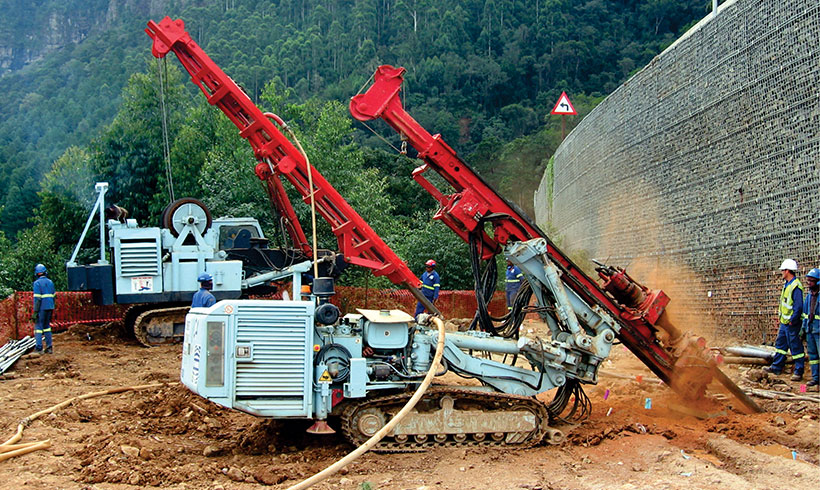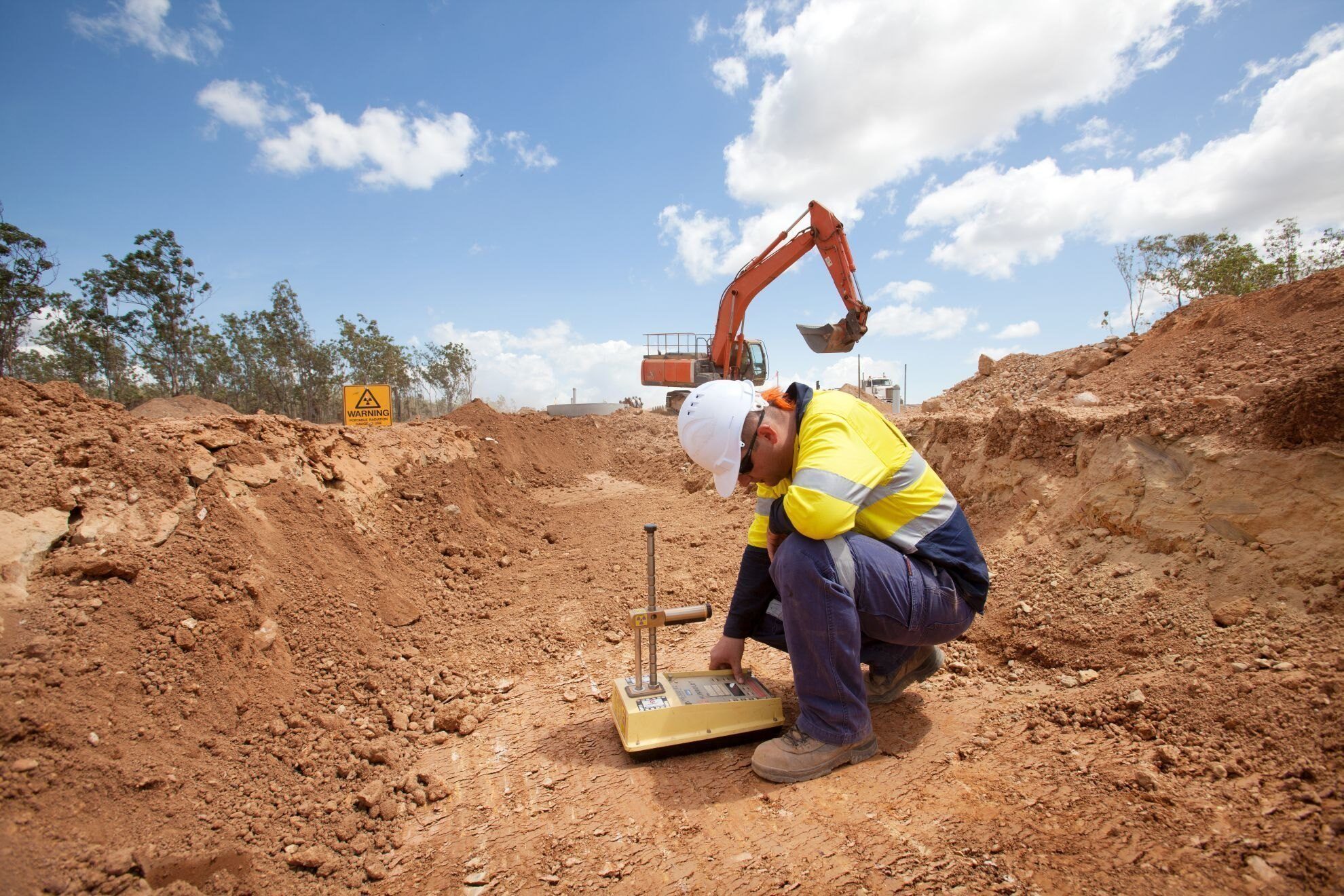Not known Incorrect Statements About Geotechnical Engineering For Construction Projects
Not known Incorrect Statements About Geotechnical Engineering For Construction Projects
Blog Article
The 10-Minute Rule for Geotechnical Engineering For Construction Projects
Table of ContentsThe 4-Minute Rule for Geotechnical Engineering For Construction ProjectsThe Greatest Guide To Geotechnical Engineering For Construction ProjectsThe Buzz on Geotechnical Engineering For Construction ProjectsSome Of Geotechnical Engineering For Construction ProjectsLittle Known Questions About Geotechnical Engineering For Construction Projects.
For that reason, throughout the examination, it is crucial to pierce at the needed deepness and the called for number of openings based on the recommendation of the Canadian Structure Style requirement. Often, the proprietor could conserve some Geotechnical Investigation expense yet end up investing more than the expected during the building and construction expense.The duties of the geotechnical professional involve providing product testing for building assistance. Geotechnical Engineering for Construction Projects. Geotechnical engineers evaluate all the area test records to ensure that building is going on based on the project requirements. Throughout building and construction, a confirmatory examination for dirt compaction is done on-site to guarantee that no future negotiation occurs
After the concrete is poured -7 days and 28 days- examinations are carried out on concrete examples gathered from the website to ensure that the concrete poured satisfies the style criterion. Asphalt core is taken after the Asphalt is laid and compressed to validate that it fulfills the layout requirement. All laboratory examination records are evaluated by the Geotechnical Designer to guarantee that it fulfills the project requirements.
Rumored Buzz on Geotechnical Engineering For Construction Projects

Geotechnical engineering plays an important role in ensuring the security of building and construction tasks. Learn exactly how it impacts layout and total job success. Geotechnical design is an important branch of civil design that concentrates on comprehending the behaviour of planet materials, such as dirt and rock. It involves analysing subsurface conditions to make certain that a structure's structure or framework is secure and safe.

For a trusted structure and a smooth building and construction process, depend give the know-how you need. Call to get professional recommendations and geotechnical services tailored to your following project.
Some Known Factual Statements About Geotechnical Engineering For Construction Projects
When starting a land growth job, comprehending the ground under your feet is as essential as the structures you prepare to develop over it. Our Geotechnical Design group analyse the ground, guaranteeing it is appropriate for the suggested growth while providing you with the info needed to meet your job goals.
Geotechnical Engineering looks at the development of the ground, as it is the foundation for all projects. Where frameworks need to be made relative to the ground problems; ground problems (e.g., soft ground) may call for reinforcing relying on the dimension of the desired framework. Before building, you need to find out about the groundwater, dirt structure, and liquefaction possibility of your land.
For sites that are not linked on the regional authority infrastructure additional site investigations would be required to offer technological inputs for on-site stormwater and wastewater. We have actually experienced Geotechnical Designers based in each office, sustaining your geotechnical demands nationwide. Connect to us to go over exactly how we can support your following task.
These reports are customized to meet the details demands of a job and include design criteria and guidance for the building of a series of manufactured frameworks. As giving consultancy services covering locations such as slope stability and load-bearing abilities for different materials, these engineers take on study and development activities to enhance methodologies, devices, products expertise and analysis covering entire lifecycles.
The 7-Second Trick For Geotechnical Engineering For Construction Projects

Rates of pay typically raise as your knowledge and abilities grow, with guidelines directing to a graduate starting wage of in between 18,000 and 28,000 per year in the UK. This increases to 26,000 to 36,000 with a few years of experience and then reaching 40,000 to 60,000+ for senior, legal or master designers.
With the ideal application it is possible to master the occupation and gain access to a tough yet fulfilling and vital occupation. A geologist would require to re-train to become a geotechnical designer, although there is lots of cross-over between both occupations, which might make this simpler - Geotechnical Engineering for Construction Projects. Rock hounds need to have an understanding of dirts, rocks and other materials from a clinical point of view, while geotechnical engineers tale their knowledge of matters such as soil and rock technician, geophysics and hydrology and use them to engineering and environmental tasks
When starting, these designers will certainly have a tendency to work with less intricate jobs, developing expertise and experience prepared for even more challenging job later. Geotechnical designers tend to be experts in certain locations as they grow in experience, focusing on specific frameworks such as railways, roads or water. These designers also collaborate with renewable resource, offshore and onshore oil and gas, nuclear power, and a lot more.
Geotechnical Engineering For Construction Projects for Beginners
The time taken to become a geotechnical engineer depends on where you are based, where you study and what level of education you check here want to acquire prior to going into the work environment. Generally-speaking it takes 3-4 years to get to the fundamental requirements to start a profession as a geotechnical engineer.
These procedures enable specialists to analyze a host of browse this site dirt mechanics consisting of weight, porosity, void-to-solid bit ratio, permeability, compressibility, optimum shear stamina, bearing ability and contortions. If the framework calls for a deep foundation, engineers will certainly use a cone penetration examination to estimate the amount of skin and end bearing resistance in the subsurface.
When evaluating a slope's equilibrium of shear anxiety and shear stamina, or its capacity to hold up against and undergo motion, rotational slides and translational slides are frequently thought about. Rotational slides fall short along a rounded surface area, with translational slides happening on a planar surface area. An expert's objective is to identify the conditions at which an incline failing might occur.
Frequently, searchings for other suggest that a site's dirt ought to be treated to enhance its shear toughness, tightness and permeability prior to layout and construction. When it comes time to set out structure strategies, experts are significantly focused on sustainability, more especially just how to decrease a structure's carbon footprint. One strategy has been to change 20 percent of a structure's cement with fly ash, a waste item from coal fire power plants.
Report this page